1,000 days on, ‘Sewol’ is still there
Families of dead and missing still seeking solace, nearly three years after ferry tragedy
By Jo He-rimPublished : Jan. 8, 2017 - 15:50
“One thousand days or 900 days, it’s all the same to me. I am a grieving mother who is still living that day, begging for the life of my child,” said Lee Geum-hee.
A new year has arrived, but Lee is still stuck on the disaster that took place on April 16, 2014.
As of Monday, 1,000 days have passed since the ferry Sewol sank with 304 people on board. However, Lee has still not left Paengmok port, the area close to the sea that claimed the life of her daughter, Cho Eun-hwa.
Cho is among nine victims whose bodies remain missing, along with fellow Danwon High School students Nam Hyeon-cheol, Park Young-in and Heo Da-yun; teachers Yang Seung-jin and Go Chang-seok; and citizens Lee Young-suk, Kwon Jae-geun and his then 6-year-old son Hyeok-gyu.
Out of the 304 victims, 250 were Danwon students who were told by the ship’s crew to stay put while they fled the vessel. A civilian-government special committee on the irregularities surrounding the incident was launched, but the Park Geun-hye administration pulled the plug on it in September without making much progress.
A sea of yellow ribbons and flags, a “postbox to heaven” for the victims, and pictures of those who remain underwater serve as a reminder that the feelings of loss and pain caused by the accident continues.
“People say they’ll remember, but what I want is to find her (Cho), I want the ship to be salvaged. I’ll be here until Eun-hwa comes out of the water,” Lee said, adding that she will stay at the port with families of others who remain missing.
A new year has arrived, but Lee is still stuck on the disaster that took place on April 16, 2014.
As of Monday, 1,000 days have passed since the ferry Sewol sank with 304 people on board. However, Lee has still not left Paengmok port, the area close to the sea that claimed the life of her daughter, Cho Eun-hwa.
Cho is among nine victims whose bodies remain missing, along with fellow Danwon High School students Nam Hyeon-cheol, Park Young-in and Heo Da-yun; teachers Yang Seung-jin and Go Chang-seok; and citizens Lee Young-suk, Kwon Jae-geun and his then 6-year-old son Hyeok-gyu.
Out of the 304 victims, 250 were Danwon students who were told by the ship’s crew to stay put while they fled the vessel. A civilian-government special committee on the irregularities surrounding the incident was launched, but the Park Geun-hye administration pulled the plug on it in September without making much progress.
A sea of yellow ribbons and flags, a “postbox to heaven” for the victims, and pictures of those who remain underwater serve as a reminder that the feelings of loss and pain caused by the accident continues.
“People say they’ll remember, but what I want is to find her (Cho), I want the ship to be salvaged. I’ll be here until Eun-hwa comes out of the water,” Lee said, adding that she will stay at the port with families of others who remain missing.
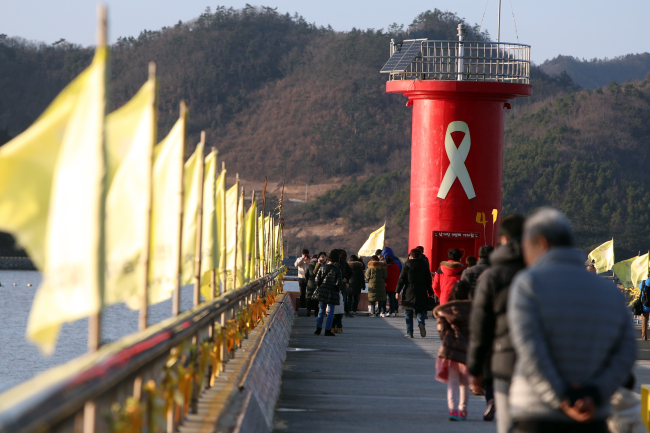
Their wait was prolonged again in November, as the government flip-flopped on its decision to salvage the ship last July, saying the operation could only commence in April at the earliest.
“The president and the government said they will find every last person and send them back to their families. It’s now been 1,000 days,” Lee said.
There is ongoing dispute over the method of recovering the ship, with the installation of 33 lifting beams to eventually bring its hull to the surface with wires having ended in late December. The Ministry of Oceans and Fisheries said that the preparation process of bring the ship to the surface is about 75 percent completed, but more time is likely to be needed due to weather conditions.
Never forget
Kim Yeon-sil, whose son Jeong Cha-woong died when the ship sank, said the bereaved families are “holding on” to ensure that one of the worst maritime accidents in Korean history is not forgotten.
“Moms and dads (of students) are doing all they can, some holding press meetings and others working on finding out the truth (about the accident) and on having the ship salvaged,” said Kim.
“I have felt that the accident is fading away in people’s memories, but President Park’s impeachment and the people’s protest (against the government) shed some hope,” she said.
Park is currently undergoing an impeachment trial for a corruption scandal involving herself and her confidante Choi Soon-sil. Among other charges, she is being accused of acting inappropriately during the Sewol tragedy.
“She just wasn’t working (on that day). The essence (of the suspicion) is why she didn’t give instructions (as state chief) to save the kids, not whether or not she received cosmetic treatment,” said Kim.
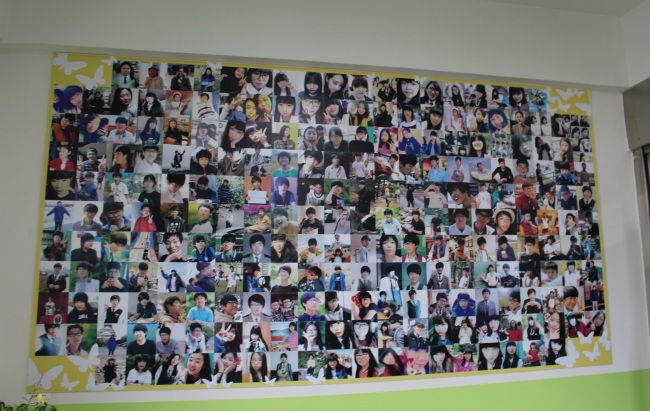
But with Park adamantly in denial of any wrongdoings on the day of the accident, and the investigative processes halted, fatigue is starting to set in.
The parents have decided to change their method of fighting. After suffering from months of sorrow and missing their children, mothers and fathers have now gathered the strength to do various activities, such as acting out a play and singing in chorus.
“In order to sustain our struggles, we should break out of our sadness and depression,” Kim said.
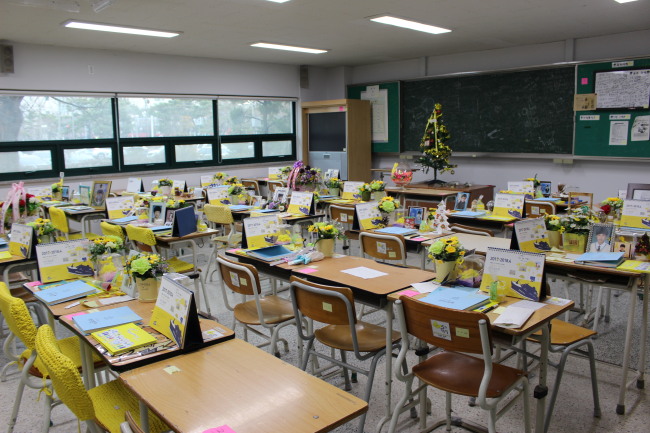
Memory classrooms
One of the measures to ensure awareness about the Sewol disaster was the “Memory Classrooms,” originally set up in Danwon School in Ansan, Gyeonggi Province. These were later relocated to the Ansan Office of Education. The rooms have been preserved in the state when they were being used by their now-deceased youthful occupants.
With playful words scribbled on the desks, and memos on calendars and whiteboards, the classrooms have an almost a merry atmosphere of teenagers -- before one realizes it is a memorial.
“I could not help my eyes welling up in tears. All of us were utterly shocked on that day (of the ferry sinking),” said 30-year-old Jeong Gyeo-wun about her visit to the Memory Classrooms in December. “I think it is important to preserve these classrooms.”
Post-its and letters are left on the desks of the then 17-year-olds, congratulating them on their adulthood which they would have reached by turning 19 in 2016.
“I feel emotions which cannot be put into words as I walk through these traces,” said Park Jeong-min.
According to officials at Ansan City Hall and the education office, over 642,025 visitors have paid their respects to the students at a district memorial altar in Danwon since the tragedy. More than 2,300 citizens visited the classrooms after they were moved, since Nov. 21 when they opened to the public.
But many claimed that the preserved area is but a remnant of the real classrooms.
Bereaved families and education authorities at Gyeonggi had been at loggerheads last August over the relocation, as the former insisted that the classrooms stay in Danwon. The families eventually caved in, but the complaints remain.
“(The relocated memory classrooms) are just a pretense, not the actual environment where the (deceased) students had actually spent their daily hours,” said Kim Yeon-sil. “It just feels like a soulless place.”
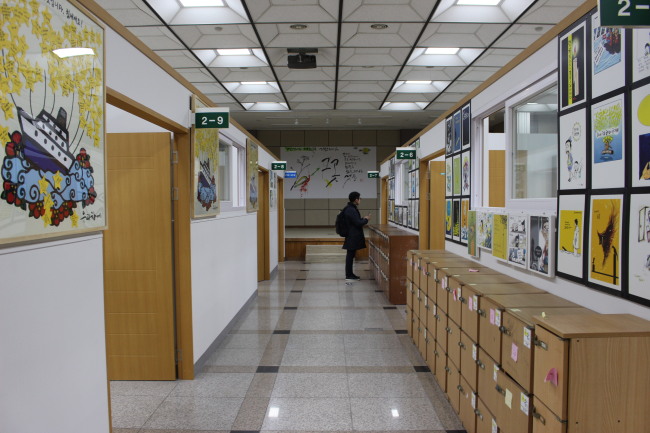
These mock classrooms lack one crucial sentiment -- the feeling that the late students were actually there, according to Kim.
Some of the bereaved families have cleared out their children’s desk, which was used to hold gifts and messages from well-wishers across the country.
“I’m truly thankful to the people for remembering the children and for raising candles (in candlelight vigils), but I urge them to think about what should be the priority. Because nine people are still in Sewol,” said Lee, the mother of Cho.
By Yoon Min-sik, Jo He-rim
(minsikyoon@heraldcorp.com)%20(herim@heraldcorp.com">minsikyoon@heraldcorp.com) (herim@heraldcorp.com)
Photos of Memorial Classrooms:
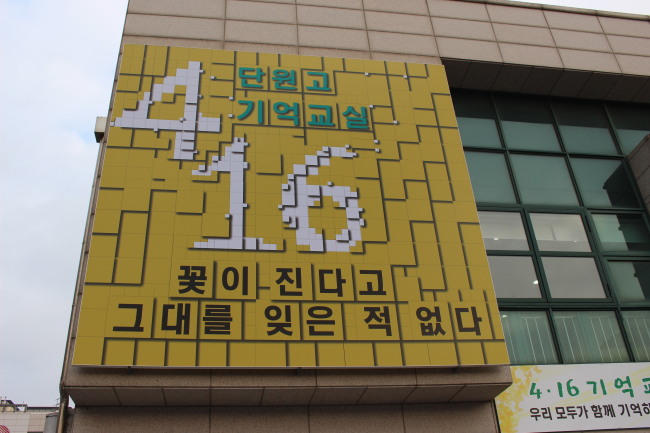
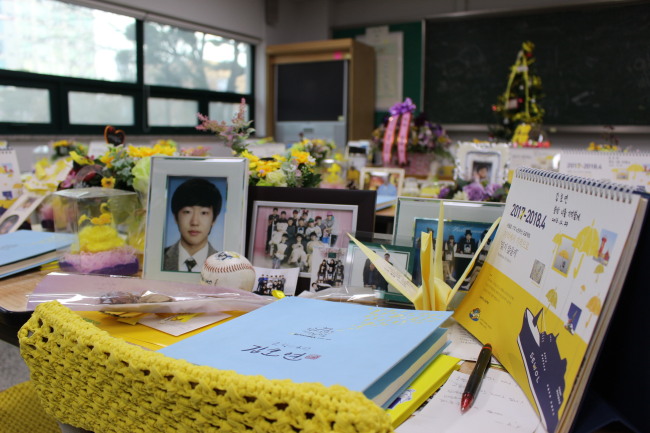
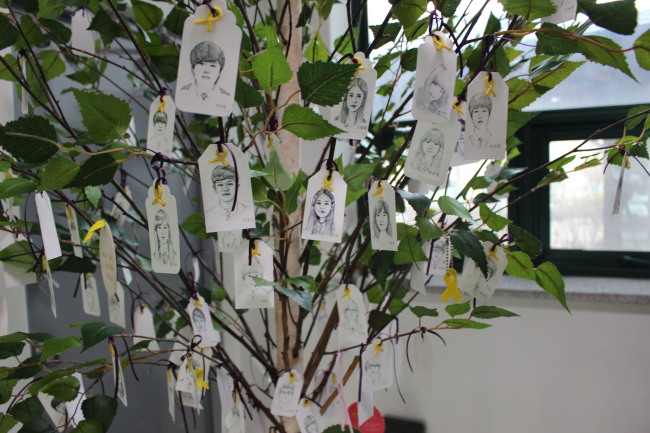
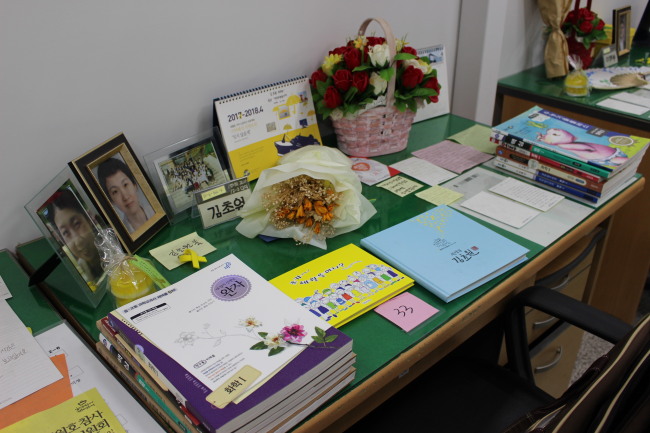
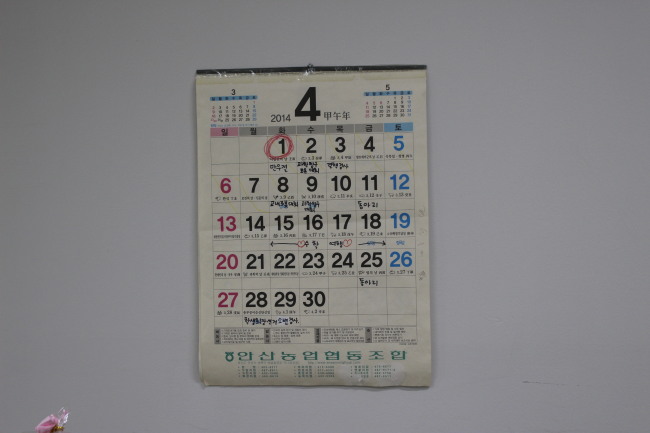
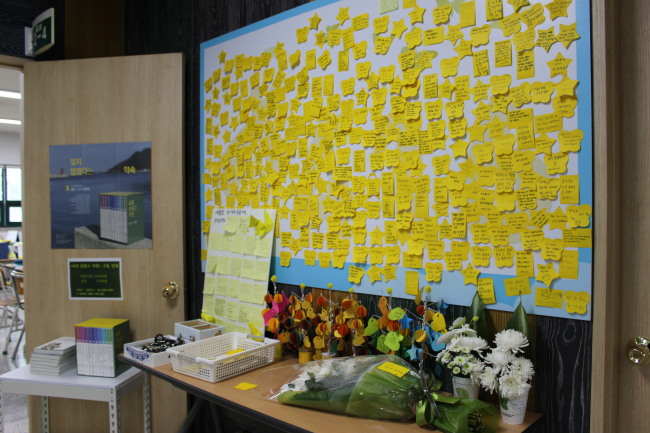


![[Herald Interview] 'Amid aging population, Korea to invite more young professionals from overseas'](http://res.heraldm.com/phpwas/restmb_idxmake.php?idx=644&simg=/content/image/2024/04/24/20240424050844_0.jpg&u=20240424200058)
















![[Today’s K-pop] Kep1er to disband after 2 1/2 years: report](http://res.heraldm.com/phpwas/restmb_idxmake.php?idx=642&simg=/content/image/2024/04/25/20240425050792_0.jpg&u=)